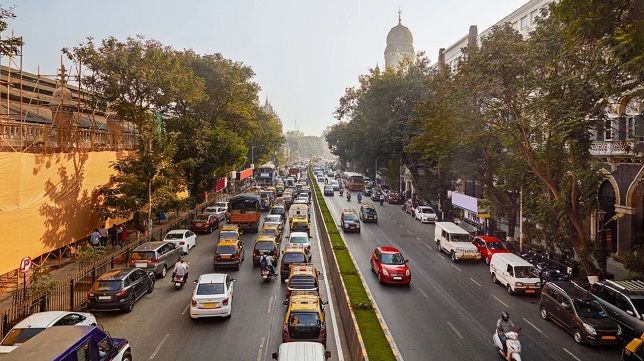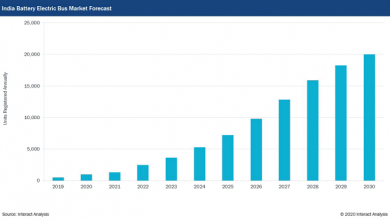The normalisation of data is an essential ingredient to mass market electric vehicles

With traffic congestion being a frequent pain point in India, electric vehicles (EVs) have become the solution to tackling congestion and pollution by offering environmental-friendly and sustainable modes of transportation.
As a result, interest in EVs has been growing across India in recent years. According to data from the Federation of Automobile Dealership Associations of India (FADA), sales of EVs have tripled in the last fiscal year.
The uptake in EVs has also been bolstered by an increase in charging infrastructure and government policies to encourage the adoption of EVs in the region. However, having the right infrastructure alone is not enough to achieve mass EV adoption. Automakers, technology solution providers and governments need to work more closely together to ensure that they are keeping up with EVs drivers’ demands.
Feeding the appetite of EV drivers
A recent study done in the United States states that consumers purchase EVs for a variety of reasons such as environmental protection, cost savings and convenience. While environmental protection is a given and cost savings is relative to the type of EVs being purchased, let’s dive deeper into what it means to be convenient of EV drivers.
EV drivers everywhere want to know (1) How far can my EV go with the amount of juice left in it, (2) Where can I charge up when I need to? (3) How much does it cost to charge up? and (4) How long does it take to charge up? Essentially, information data is what EV drivers want at their fingertips.
However, the different types of data are more often than not represented in different formats or on different platforms, making it inconvenient for an EV driver to have all the information in one plate. Moreover, the data can sometimes appear to be inaccurate or presented in a poor user interface, resulting in a poor EV driving experience.
For instance, incomplete location data could direct EV drivers to a charging station that is either not working, does not exist, or worst – not being able to navigate drivers accurately. Furthermore, the lack of or inaccurate information on how far an EV can go on a single charge often leads to EV range anxiety – the fear of running out of power while driving an EV and not being able to find a charging point.
These challenges call for the need to make data accessible for all, in a normalised, secure, intuitive and safe manner without distracting EV drivers from their driving. To do that, EV automotive OEMs (original equipment manufacturers), charging-technology providers, map providers, operators, utilities, and other players within the EV ecosystem must employ the same format of data to enhance the overall EV driving experience.
The taste of normalised data
The good thing is that automakers are already aware that this needs to be done and some have already started to do so by diversifying their portfolios through partnerships.
For instance, REVOS’ peer-to-peer charging point, BOLT, will be integrated within the MyGate mobile app to provide sustainable EV charging solutions to Resident Welfare Associations (RWAs) and gated societies. RWAs will have the flexibility to choose from a wide range of EV charging options for community and private charging. This eliminates the need to install any other app and provides various affordable and seamless charging infrastructure options.
In another example, Reliance Industries Ltd (RIL) through its joint venture Reliance BP Mobility Ltd (RBML) has teamed up with BluSmart to set up EV charging infrastructure. Through this partnership, BluSmart is also expected to increase its EV fleet size and offer services outside the National Capital Region.
By consolidating data in a normalised format within a unified technology platform, EV adoption will be able to move to mainstream adoption at scale. In the same vein, different type of companies such as payment provides can also be involved to make the EV charging experience more seamless and convenient.
Serving a better EV driving experience
The shift towards electromobility has already begun within India. India’s EV market size is expected to expand at a CAGR of 94.4% from 2021 to 2030, reaching USD 152.21 billion by 2030.
The Indian government has a goal to transition from new sales of ICE (Petrol & Diesel) vehicles to 100% plug-in electric vehicles (EV) by 2030, as well as transforming India into a global hub for electric vehicles manufacturing. Efforts are also underway to roll out various demand and supply incentives to drive up EV adoption within the country.
For instance, India’s Department of Heavy Industry, under the National Electric Mobility Mission Plan 2020, has formulated the Faster Adoption and Manufacturing of Electric Vehicles scheme to support the development of both Hybrid Vehicles and EV markets7.
However, for EVs to go mainstream in the region, the different technologies involved within the EV ecosystem need to ‘talk’ the same language. This starts from normalising and analysing disparate data sets for further analysis, ensuring that data can be easily consumed by others.
Author:

Abhijit Sengupta
Senior Director and Head of Business for Southeast Asia and India
HERE Technologies
Abhijit Sengupta is Senior Director and Head of Business, Southeast Asia and India at HERE Technologies. Based out of Singapore, Abhijit brings over two decades of experience in Sales and Business Development, Product Management and Product Operations. He has been driving customer successes in the B2B and B2C segments with market-leading organizations in India and Southeast Asia.
Published in Telematics Wire





